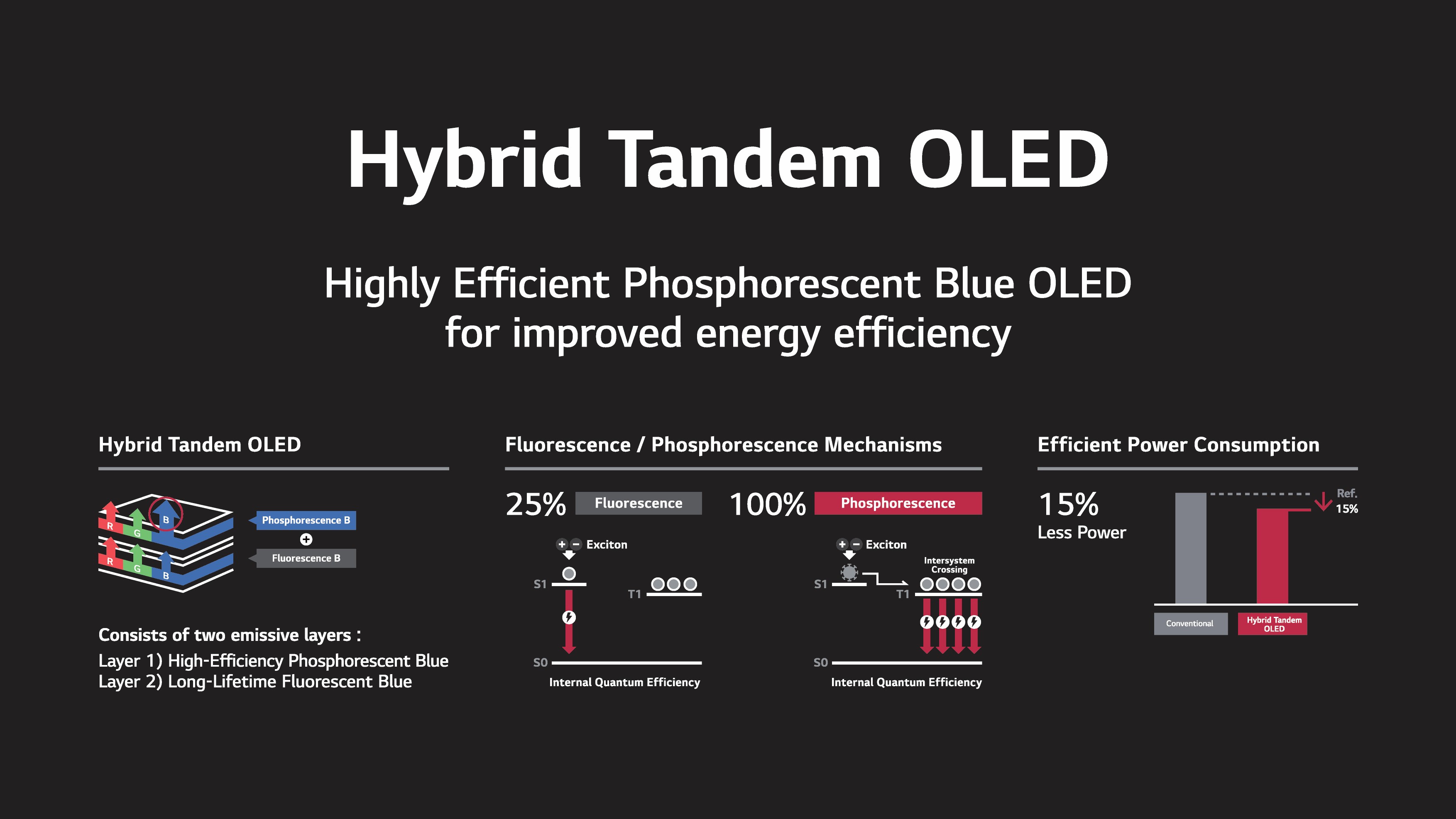- LG Display announced “commercialization level” performance of a blue phosphorescent OLED panel
- The new panel is a hybrid fluorescent/phosphorescent design that consumes about 15% less power than typical OLED displays
- The new tech will be demonstrated in a “small and medium-sized panel that can be applied to IT devices such as smartphones and tablets”
Korean manufacturer LG Display today announced it has successfully verified the “commercialization level” performance of blue phosphorescent OLED panels.
The announcement comes eight months after LG Display partnered with OLED technology company Universal Display Corporation on the development of blue phosphorescence, a necessary next step in creating a “Dream OLED” display.
According to LG Display’s release, the company was able to make the technology mass production-ready using a “hybrid two-stack Tandem OLED structure, with blue fluorescence in the lower stack and blue phosphorescence in the upper stack.” This approach differs from previous OLED display panels, which use a blue fluorescent layer paired with red and green phosphorescent layers.

The issue with using a fluorescent layer in OLED panels is that it provides only 25% light efficiency compared to a phosphorescent layer, which provides 100% light efficiency. LG Display’s hybrid approach changes things up in “combining the stability of fluorescence with the lower power consumption of phosphorescence.” By doing so, it “consumes about 15% less power while maintaining a similar level of stability to existing OLED panels,” according to the company.
LG plans to demonstrate its blue phosphorescent OLED panel with two-stack Tandem technology at SID Display Week, an event that gets underway on May 11, 2025 in San Jose, California.
Has the Dream OLED TV finally arrived?
While LG Display’s announcement is intriguing, the blue phosphorescent OLED panel it plans to display at SID Display Week will showcase the technology in “a small and medium-sized panel that can be applied to IT devices such as smartphones and tablets.”
That means the current iteration of the tech, while mass production-ready (LG Display says it has “completed commercialization verification with UDC”) remains in prototype form, and is not ready for introduction in larger displays such as the best OLED TVs.
We’ve been following the news on blue PHOLED, a term used for the phosphorescent layer in OLED displays, for some time, and previously reported on LG Display’s having “successfully developed an OLED panel based on blue phosphorescence.”
Today’s news goes further in certifying that a similar OLED display panel is ready for prime time, but this version uses a hybrid approach that doesn’t yet meet the full light efficiency expectations of a “Dream OLED.”
Meanwhile, LG Display’s “four-stack” OLED display panel, a design that doesn’t rely on blue phosphorescent tech, hybrid or otherwise, but instead utilizes separate red, green, and blue elements to enhance color purity and boost brightness, can be found in the impressive new LG C5 OLED, one of the best TVs to arrive so far in 2025.
We expect this panel to remain the cutting edge for OLED TVs for some time to come, while the new hybrid two-stack Tandem OLED structure with blue phosphorescence gets developed for devices like phones and tablets.
You might also like…
- Sony’s new TV lineup for 2025 doubles down on QD-OLED
- New cheaper blue OLED material breakthrough could be great news for OLED TVs – and every other device
- Samsung says all sizes of the S95F OLED TV will hit 4,000 nits of brightness – even the W-OLED one
Al Griffin has been writing about and reviewing A/V tech since the days LaserDiscs roamed the earth, and was previously the editor of Sound & Vision magazine.
When not reviewing the latest and greatest gear or watching movies at home, he can usually be found out and about on a bike.



